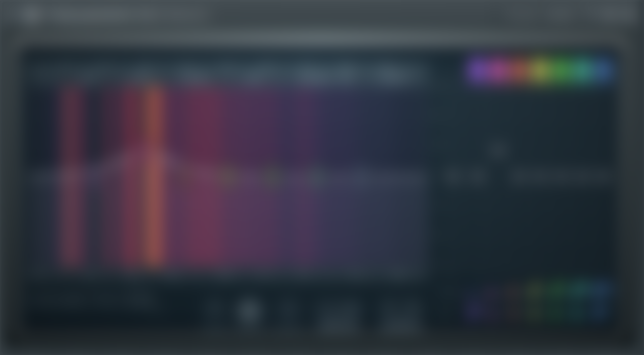Quick Article - Identification of Frequencies
Like comparing Pavarotti and MJ's voices
One of the main tools when mixing and getting a particular instrument or track to sound how we really want It, is the Equalizer or EQ, which permits us to boost or cut different frequencies normally in the human hearing range (20hz-20kHz) In order to boost certain sonic characteristics we consider positives for the overall sound or cutting the ones we don't like, either to give space or more presence for other particular channels. In this article we'll talk about the different ranges of frequencies, divided in Sub, Bass, Low Mid, Mid, High Mid and High Frequencies, which we'll define, identify Its specific frequency range and the characteristics, either positive or negative that a sound might have in these areas. Let's begin with the lowest frequency range, the Sub.
Sub (20 to 60Hz):
This is where the rumbliness of the sound comes. Though you won't be able to hear this frequency range If you don't have headphones or good monitors, you will detect that the main problem with too much of a boost in this space might end up in a sloppy bass, way heavier that we expect to. Another way to describe It is as an abdominal sound. Common instruments to be found in this area are Sub Basses and the lower parts of 808s.

Bass (60 to 250Hz):
Characteristics defined as boomy or punchy for certain instruments can be detected in this frequency range. Boosting these frequencies can make the sound heavier and plosive, while cutting them will make the overall body of It weaker. Instruments found in this area area usually Basses or Kicks.

Low Mid (250 to 750Hz):
If you ever heard that a particular type of audio sounds muddy or boxy, this frequency range is where the problem most probably is. Boosting frequencies in this range will make a particular instrument sound like If someone is playing It from a sealed box and you can only hear from the outside, while cutting Its content in a subtle way If needed can bring a little more clearness to the sound. This is a good space to place instruments like Pads.

Mid (750 - 3kHz)
A boosted frequency in this spectrum will make the sound hollow, like It came from a cheap pair of speakers, usually also identified as nasal, having almost like an A-AH sound. A great variety of instruments can be found in this range, being some of the most popular electric pianos and organs.

High Mid (3k-7kHz):
A conscious amount of boost in this area can actually make a sound more present and clear, doing quite the opposite with a cut. If boosted too much, It will create a Tinny sound. Instruments that can reside here are varied, such as Hi-Hats or Bells.

High (7k-20kHz):
This is where most of the noise due to tape recordings is produced, getting a sibilant or shimmery kind of sound, hearing almost like wind being blown in your ear if boosted too much. If you like to work with genres like Boom-Bap and Lo-Fi, then this is a perfect place to put Tape emulation to generate that kind of old school noise that is so common to samples.

We hope that the information presented can be of use to you, getting you to identify the different properties that a sound might present in different areas of the frequency spectrum and what might happen If you cut or boost them. As always, we wish you the best of luck in your production endeavors and thank you for your support.





